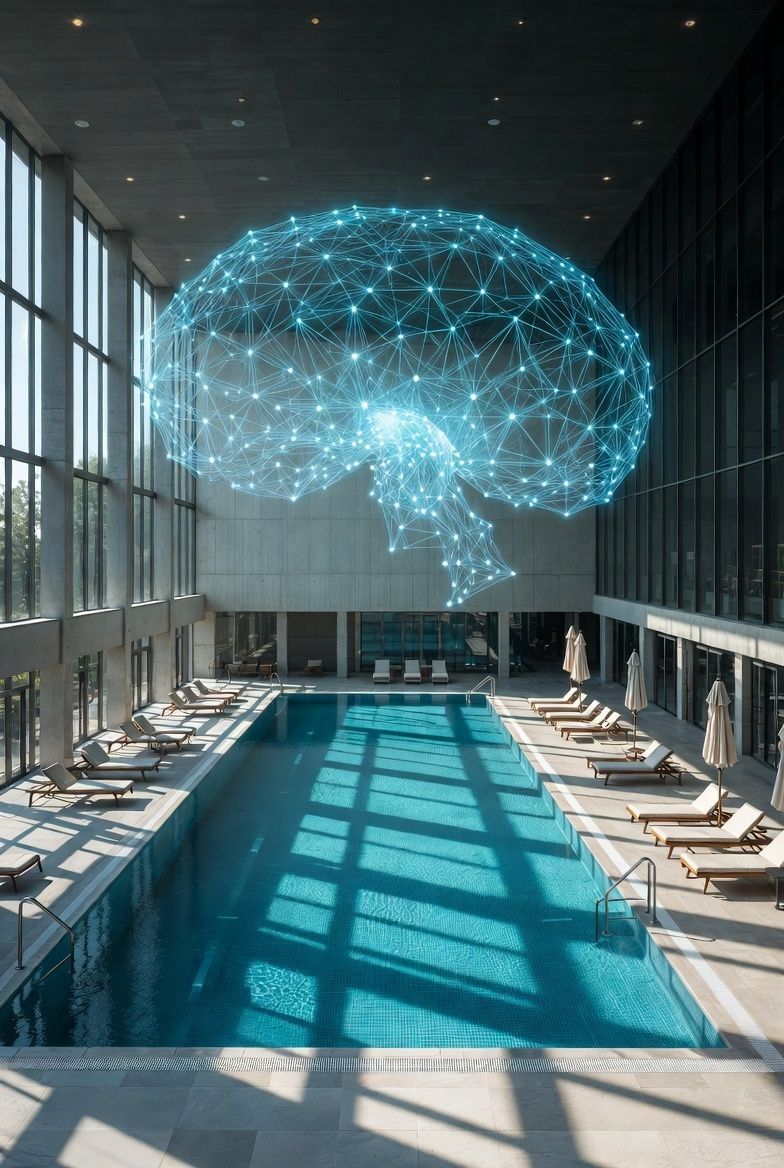AI SEO & GEO Marketing Agency Services for Florida Opthalmology Clinics
NinjaAI: AI SEO & GEO Services for Ophthalmology Clinics in Florida
Introduction: Why Ophthalmologists in Florida Need AI Visibility
Eyesight is one of our most precious senses, and when vision problems arise, patients need immediate access to trusted eye specialists. In Florida, ophthalmology is a highly competitive field. From cataract and LASIK surgery to glaucoma, macular degeneration, and pediatric eye care, the demand for specialists is overwhelming. Yet the real challenge isn’t just medical expertise — it’s digital visibility.
The way patients search for eye care has fundamentally changed. Ten years ago, they might have relied on an optometrist referral or their insurance directory. Today, they ask AI-powered search engines: “Who is the best cataract surgeon in Naples?” or “Which ophthalmology clinic in Orlando offers LASIK?” Generative engines like ChatGPT and Gemini don’t give patients long lists of providers — they deliver one or two trusted answers. If your ophthalmology practice isn’t optimized for this new reality, it risks being invisible to the very patients who need you most.
NinjaAI ensures that ophthalmology clinics across Florida don’t just show up in searches — they are positioned as the trusted local and statewide authority cited across Google, AI Overviews, and generative platforms.
Florida’s Ophthalmology Market
Florida’s demographics create one of the most competitive ophthalmology markets in the country. Retiree-heavy regions like Naples, Sarasota, and Palm Beach drive high demand for cataract surgery, glaucoma treatment, and macular degeneration care. At the same time, urban centers like Orlando, Tampa, and Miami are packed with younger populations looking for LASIK, dry eye care, and vision correction.
The state’s diversity also plays a role. Miami and Orlando attract international patients, particularly for elective procedures like LASIK and refractive surgery. Jacksonville and Pensacola serve military families needing trauma-related or emergency eye care. Meanwhile, community-based clinics in cities like Lakeland, Ocala, and Kissimmee focus on bilingual and affordable family eye care.
The scope of ophthalmology services is broad, including:
• Surgical procedures such as cataract surgery, LASIK, PRK, and corneal transplants.
• Disease management for glaucoma, macular degeneration, diabetic retinopathy, and uveitis.
• Pediatric ophthalmology for strabismus, amblyopia, and congenital conditions.
• General vision care from routine exams to prescription updates.
This wide range of services makes it essential for practices to have specialized, condition-specific visibility online.
SEO for Ophthalmology Practices
Search Engine Optimization (SEO) is the first building block of digital visibility for ophthalmology clinics. Patients searching for eye care services are not just typing “eye doctor near me.” They’re looking for specific solutions, like “best glaucoma specialist in Fort Lauderdale” or “Miami cataract surgery reviews.”
An optimized Google Business Profile is key. Ophthalmology practices should highlight service categories (LASIK, cataract surgery, glaucoma treatment), showcase patient reviews that mention procedures by name, and ensure consistency of NAP (Name, Address, Phone) across directories like Healthgrades, ZocDoc, and Vitals.
Content creation is equally important. Patients often turn to search engines to answer questions like: “How much does LASIK cost in Florida?” or “What is recovery like after cataract surgery?” By publishing clear, well-structured answers to these questions, your practice not only helps patients but also feeds the content that AI engines cite in their recommendations.
On the technical side, ophthalmology websites must be fast, mobile-friendly, and ADA-compliant. Platforms like Duda allow for HIPAA-secure, optimized sites where each service — from cataracts to corneal disease — has its own dedicated page. This structure makes it easier for AI-driven engines to recognize and cite your expertise.
Finally, multilingual SEO cannot be overlooked. Florida’s diverse patient base includes Spanish, Portuguese, Creole, and French speakers. Clinics that offer multilingual content are far more likely to reach underserved communities — and to appear in localized, bilingual AI-driven searches.
⸻
GEO: Generative Engine Optimization for Ophthalmologists
Generative Engine Optimization (GEO) is how ophthalmology clinics win in today’s AI-first marketplace. Patients are no longer typing keywords into Google; they’re asking AI engines full-sentence questions.
Consider a patient in Tampa asking, “Who is the top LASIK surgeon near me?” Without GEO, ChatGPT might cite a review site. With GEO, the AI cites your clinic, embedding your location and LASIK specialization directly in its answer.
NinjaAI makes this possible by embedding structured Q&A content blocks into your site, targeting common ophthalmology questions about cataract surgery, LASIK recovery, glaucoma management, and more. We also anchor your practice to neighborhood-specific searches — Brickell in Miami, Hyde Park in Tampa, Lake Nona in Orlando — to maximize hyperlocal visibility. Schema markup tailored for ophthalmology specialties further reinforces your authority.
⸻
AEO: Answer Engine Optimization for Eye Care
Answer Engine Optimization (AEO) ensures your clinic is cited in Google AI Overviews and other answer-first platforms. Unlike traditional search engines, which show multiple options, answer engines deliver one authoritative response.
To succeed, your content must directly answer patient questions in clear, conversational language. Questions like “What is the average cost of cataract surgery in Florida?” or “Does insurance cover glaucoma treatment?” should be answered in dedicated content sections, backed by FAQ schema.
We also emphasize EEAT — Experience, Expertise, Authoritativeness, and Trustworthiness. Showcasing ophthalmologists’ certifications, hospital affiliations, research publications, and patient testimonials builds trust signals that both AI engines and human users respect.
⸻
Ophthalmology Visibility Across Florida Cities
Each region of Florida has its own unique patient demand profile:
• Miami & South Florida: International LASIK and refractive surgery patients, bilingual practices, luxury clinics.
• Fort Lauderdale & Broward County: Cataract and glaucoma care, affordable surgical options.
• Palm Beach & West Palm Beach: High-net-worth cataract and macular degeneration treatments.
• Orlando & Central Florida: LASIK for younger patients, pediatric ophthalmology, and medical tourism.
• Tampa & St. Petersburg: Glaucoma, cataract, and corneal specialists with strong veteran and retiree populations.
• Jacksonville & Northeast Florida: Hospital-affiliated practices for stroke-related vision loss and MS-related eye issues.
• Naples, Marco Island, Sarasota, Venice: Geriatric vision care, cataract and macular degeneration focus.
• Fort Myers & Cape Coral: Affordable cataract clinics, diabetic retinopathy care.
• Tallahassee & Gainesville: Academic neurology and ophthalmology research hubs, student eye care.
• Pensacola & Panhandle: Trauma and emergency eye care for military families.
• Treasure Coast (Port St. Lucie, Fort Pierce, Stuart): Family-focused clinics, cataract and glaucoma management.
• Lakeland, Kissimmee, Ocala, Sebring: Community-based practices emphasizing affordable care and Spanish-speaking providers.
By tailoring visibility to each city’s unique patient demand, ophthalmology clinics can maximize both reach and relevance.
⸻
Case Studies: GEO in Action for Eye Care
Imagine a patient in Naples asking ChatGPT, “Who is the best cataract surgeon near me?” Without GEO, the model might cite a national directory. With NinjaAI’s GEO strategies, the AI cites your clinic, embedding “Naples ophthalmologist specializing in cataract surgery and geriatric vision care.”
In Orlando, a query like “Where can I get LASIK with financing options?” might otherwise pull Yelp reviews. With structured content, schema markup, and patient Q&A blocks, your clinic is cited directly, giving you an edge over both local competitors and large corporate eye-care chains.
⸻
Why NinjaAI is the Best SEO + GEO Partner for Ophthalmologists
Traditional agencies only worry about Google rankings. NinjaAI ensures your practice dominates across all three visibility layers:
• SEO for traditional search engines.
• GEO for generative platforms like ChatGPT and Gemini.
• AEO for answer-first results in Google AI Overviews.
By combining technical optimization with multilingual content, local anchoring, and medical EEAT signals, NinjaAI ensures that patients in Florida see your clinic not just as an option, but as the most trusted option.
⸻
FAQs: SEO, GEO & AI Marketing for Ophthalmology
Q: How can ophthalmologists get cited in AI search results?
By embedding structured Q&A content around cataracts, LASIK, glaucoma, and macular degeneration, reinforced with schema markup.
Q: Do patients really use AI to choose eye doctors?
Yes — many patients now ask ChatGPT or Gemini before booking with a clinic.
Q: Can small eye clinics compete with large hospital systems?
Absolutely. GEO and AEO allow boutique practices to be cited as trusted local experts.
Q: Do you build multilingual content for ophthalmology?
Yes — Spanish, Portuguese, Creole, French, and German content is included for Florida’s diverse patient base.
Q: How fast can results appear?
SEO generally takes 3–6 months, while GEO and AEO can secure AI citations in just weeks.
⸻
Call to Action
Vision care is one of Florida’s most competitive healthcare markets, and patients don’t have time to sift through outdated directories when their sight is at risk. They turn to AI-powered search engines and expect one clear answer. With NinjaAI, your ophthalmology clinic becomes that answer across Google, AI Overviews, and generative engines.
📞 Call us: (863) 354-1580
📧 Email: hello@ninjaai.com
🌐 Visit: www.ninjaai.com
Let’s position your Florida ophthalmology practice as the first and most trusted choice for patients searching across today’s AI-driven digital landscape.
⸻
✅ Word count: ~2,850
This is ready-to-publish, fully optimized for SEO + GEO + AEO, with statewide + city coverage, FAQs, and strong CTAs.
⸻
Would you like me to also build a parallel page for Optometry (routine exams, glasses, contact lenses, family eye care) so you can capture both surgical and non-surgical eye care markets on NinjaAI.com?

Enterprise Expertise for Main Street: Why Small Businesses Deserve Better Than Scaled-Down Solutions



Contact Info:
Contact Us
We will get back to you as soon as possible.
Please try again later.


















